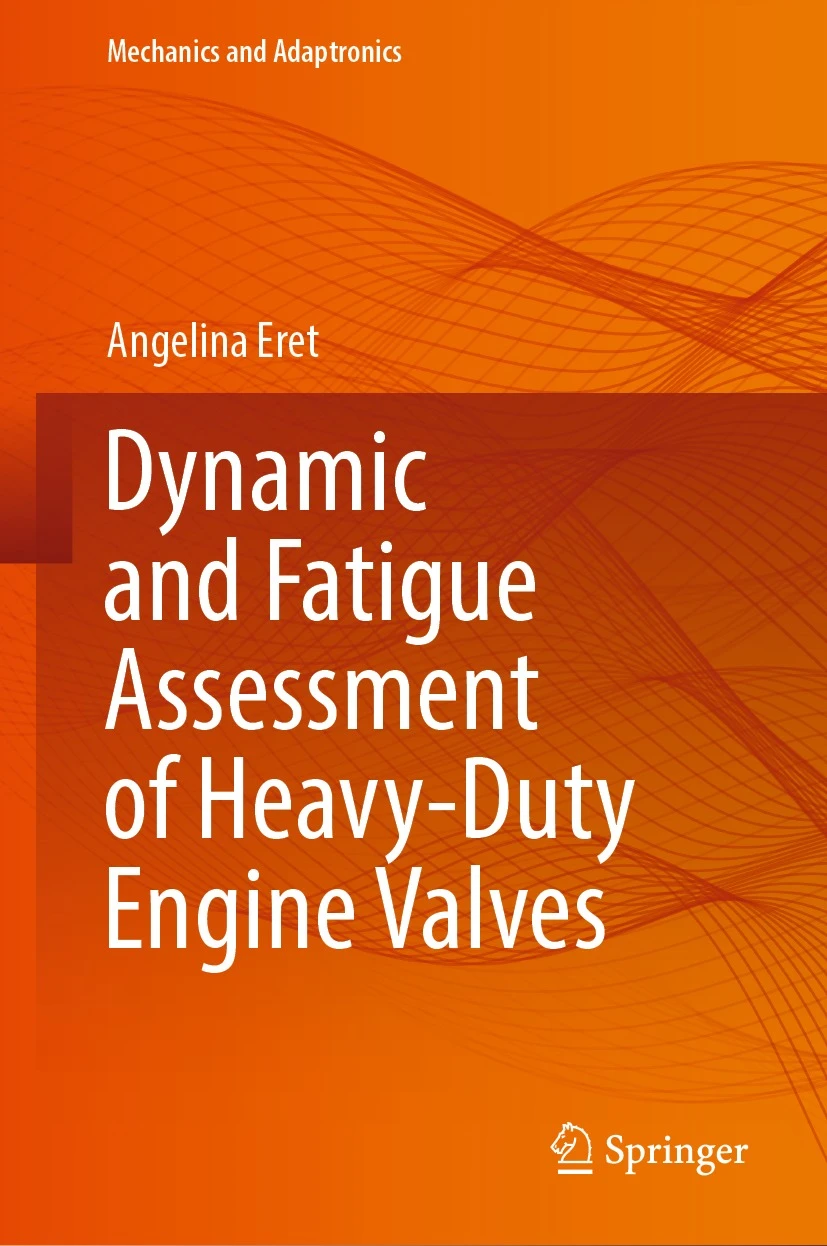The demand for more efficient combustion engines with fuel flexibility goes along with increasing component requirements regarding strength and durability, while the development costs should remain low. This applies in particular to combustion chamber adjacent components, which endure high temperatures and pressure loads. In this context, the present thesis focuses on the gas exchange valves of heavy-duty engines. Especially the valves on the exhaust side have an increased risk of fatigue failure due to their direct exposition to the hot exhaust stream. The aim of this thesis is the generation of a predictive fatigue strength assessment to strengthen the frontloading of the exhaust valve design process and to increase the reliability of the component. The fatigue strength assessment requires the knowledge of all relevant loads of the component. In this context, this thesis examines the loads of the exhaust valve during its working cycle. Beside the high temperature and cylinder pressure, further loads act on the exhaust valve. The actuation of the valve applies loads during valve opening and valve closing. The valve loads during closing reach higher levels due to an eccentric impact of the valve on the valve seat ring. Furthermore, a bold valve secondary dynamic in the form of valve bending vibrations is observed on the exhaust valves of heavy-duty engines increasing the valve load even more. The cause of this secondary dynamic is unknown. This thesis investigates the valve loads to get the necessary input for the fatigue strength assessment. With respect to a predictive approach, the determination of valve dynamic and valve loads is based on a multibody simulation model of the valve train. In order to deliver predictive results and a transferable method, this simulation model includes all relevant physical effects to describe the valve dynamic accurately during all valve load phases of the working cycle. The simulation model includes the flexible valve model and considers 3D-contacts of the valve with the valve guidance and the valve seat ring. With the simulation model, the root cause for the bold valve secondary dynamic is examined iteratively. The model delivers not only the cause for the valve secondary dynamic but most importantly the critical valve loads. These loads deliver the input for the fatigue strength assessment. To ensure the robustness of the load data determined by the simulation model the sensitivity of influences on the valve load is examined. In this context geometrical misalignment, fluctuations in load data and variable engine operation points are considered. A load collective based on the variation of influences on the valve load is the result of this analysis. All the results of the influence and sensitivity study are generated with the newly developed simulation model of the valve train. The development of a measurement setup including the execution and evaluation of these measurements is another part of this thesis. In scope of these measure-ments are temperature and strain measurements of the valve performed on an engine testbed. The measurement results fulfil two purposes: Firstly, the data validate the simulation model of the valve train. Secondly, the statistical evaluation of the data delivers information on the distribution of valve loads. These findings are used in the subsequent fatigue strength assessment to increase the reliability of the results. This thesis adds findings on the simulation of the valve dynamic to the current technological standards. Above all, it delivers a simulation-based and predictive approach on the fatigue strength assessment of four-stroke heavy-duty engine valves.
Angelina Eret
Dynamic and Fatigue Assessment of Heavy-Duty Engine Valves
Springer (2024) [LINK]

